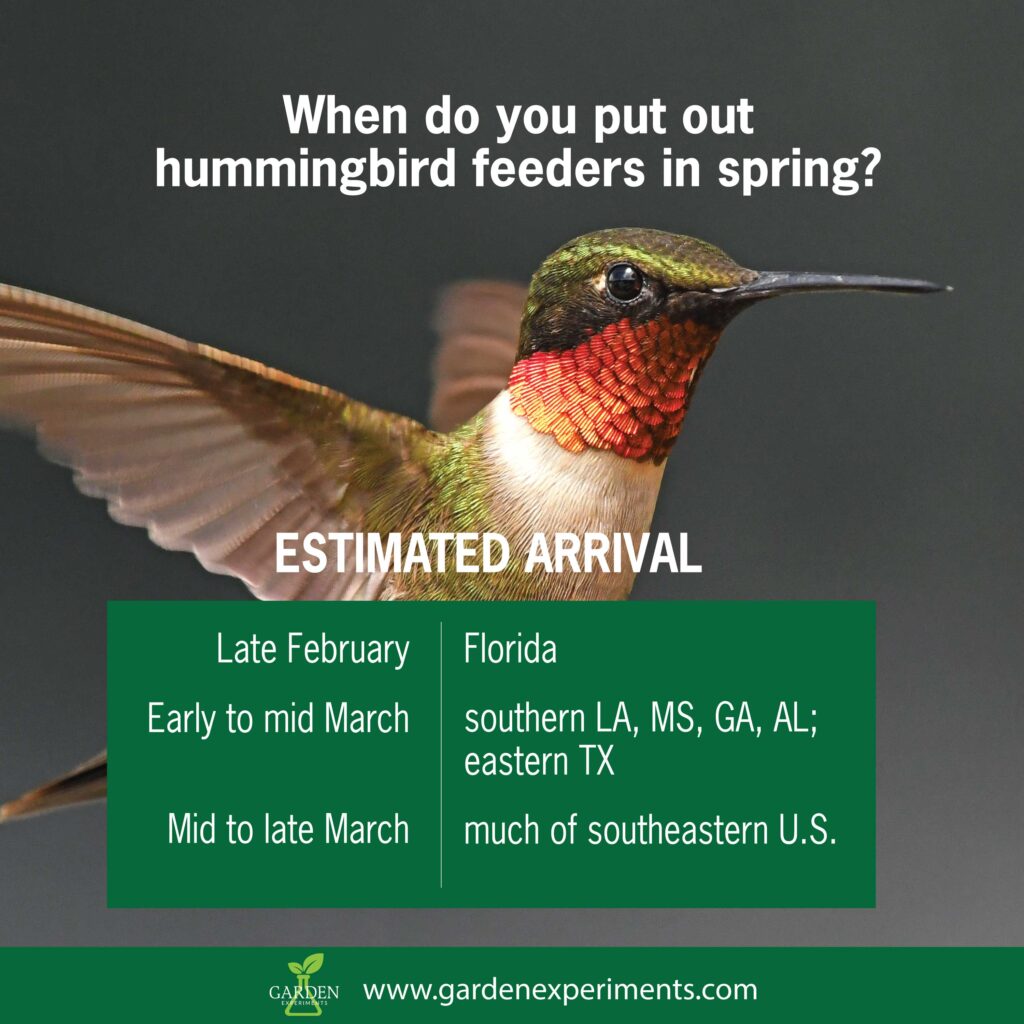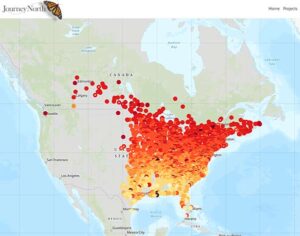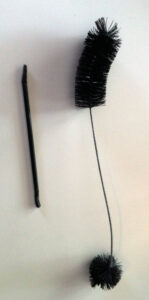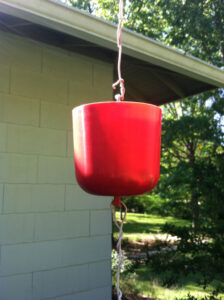The first hummingbirds start showing up in southern Texas, Louisiana, and northern Florida in late February and the first week of March.
Hummingbirds will arrive in my garden around mid to late March – at the same time as the red buckeyes are in full bloom. This is when I’ll hang my hummingbird feeders in my garden.
How to Know When to Hang Your Hummingbird Feeders
There is a great resource available online that shows reports of ruby-throated hummingbirds each year. By viewing this map and seeing when the birds are first reported in different areas, you can get a good idea when to put up your feeders. Read my review of popular hummingbird feeders to find the one right for you.
First-sightings Map for Ruby-throated Hummingbirds
This map of hummingbird sightings is submitted by citizen scientists around the world. People around the country can submit their sightings to this website. It’s a helpful tool and kind of fun to keep watching.
If you keep an eye on it, you’ll know how quickly the hummingbirds are heading north and you can get your hummingbird feeders up in time to greet those tiny travelers.
Last year over 7,000 people reported their sightings, so this map is well-documented and utilized. View the map: https://maps.journeynorth.org/map/
Hummingbird Food Recipe – Nectar Recipe
When you make food for your hummingbird feeders, don’t use any red food coloring. It’s also important that you don’t use brown sugar or honey.
- Mix one cup of white sugar to four cups of water (not brown sugar or honey!).
- Place it in a saucepan and bring to a boil.
- Remove from heat and allow it to cool completely before filling your feeders.
- Fill the feeder up for a couple of days use.
- Put the remaining amount in the refrigerator for up to a week.
- Be sure to let it warm up to room temperature before putting it our for your hummingbirds.
- No red food coloring is necessary!
How to Clean Your Hummingbird Feeder
Keeping your feeders clean and free of mold will help keep your hummingbirds healthy and prevent disease from spreading. If your feeder is in a bright, sunny spot, you’ll need to clean it more frequently (but you’re more likely to get birds too).
For a cleaning solution, Audubon recommends one part white vinegar to four parts water about once a week. Cleaning out the reservoir with a bottle brush will remove any mold in the reservoir. Use pipe cleaners or a small specialized brush (available at most birding stores) to clean out the holes from which the birds feed. Scrub away any mold or crystallized sugar. Rinse really well and let dry before putting fresh feed back into it.
How to Keep Ants out of Your Hummingbird Feeder
Ants, wasps, and bees love nectar too, so you may find them feeding with your hummingbirds. Ants often climb into the feeder and die, causing mold and fungus in the feeder. Keeping ants out of the feeder is the best way to avoid this.
We bought some really cool water reservoirs or ant moats that keep ants from reaching the feeder. The moat is hung between the feeder and the hook it hangs on. Ants can not cross the water and thus never reach the feeder. Just make sure you keep water in it.
You can even build one yourself. The birds may also drink out of this, so keep an eye on water levels.




